The study of the history of industry and trade in the Russian Empire has entered a new stage of development in the last thirty years.
Contemporary researchers of industrial history of Russia are guided by the inspiring works of their predecessors who began their investigations in the 19th century such as M.I. Tugan–Baranovsky’s “The Russian Factory in the Past and Present”, E.M. Dementiev’s “The Factory: What it Gives the Population and What it Takes From it”, Y.E. Yanson’s “Comparative Statistics of Russia and Western European States”, as well as V.P. Bezobrazov, I.M. Kulisher and a number of other outstanding academicians.
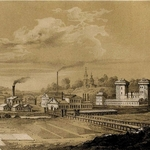 Industrial History: Trends of All‑Russian and Regional Development
Industrial History: Trends of All‑Russian and Regional Development
G.N. Ulianova
The Industrial Statistics of the Russian Empire from 1800 to 1860: Common Data, Regional and Branch Structure, Development Trends in the Pre‑Reform Period
This article focuses on the issue of the industrial statistics of the Russian Empire from 1800 to 1860 that remains relatively unexplored due to incomplete primary and secondary statistical data. The essay chronologically covered a long period of six pre-reform decades, characterized with development of all branches of industry (with the dominance of textile branch) and the beginning of industrial revolution. The article is based on various archival and published sources, primarily on the materials of industrial and trade statistics, as well as analytical reviews published by the Ministry of Finance and partially presented as articles in the ’Journal of Manufacturing and Trade’, and reviews of all-Russian and regional industrial exhibitions surveys. Particular attention is given to the representation of large and significant enterprises to illustrate the development trends.
Publishing: 28/10/2023
How to cite: Ulianova G.N. The Industrial Statistics of the Russian Empire from 1800 to 1860: Common Data, Regional and Branch Structure, Development Trends in the Pre‑Reform Period // Historical Courier, 2023, No. 5 (31), pp. 11–36. [Available online: http://istkurier.ru/data/2023/ISTKURIER-2023-5-01.pdf]
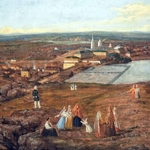 Industrial History: Trends of All‑Russian and Regional Development
Industrial History: Trends of All‑Russian and Regional Development
E.G. Neklyudov
Merchant Families as Part of the Ural Factory Owners in the First Half of the 19th Century: Features of Ownership and Management
Based on the reconstruction of the “ownership histories” of the merchant families of the Gubins, Rastorguevs, Yartsovs, Zelentsovs and Podyachevs, the peculiarities of their ownership and management of mining factories in the Urals in the first half of the 19th century are revealed. These features include the increased dynamism of merchant entrepreneurship, expressed in a significantly more cases of connecting to and leaving the mining business than the nobles. He was also characterized by great instability, the result of which was the forced intervention of the state in the affairs of private management and even putting up factories for sale at public auction. In general, we can conclude about the unfavorable nature of most merchant practices of ownership and management, which often led to the decline or even collapse of the mining business.
Publishing: 28/10/2023
How to cite: Neklyudov E.G. Merchant Families as Part of the Ural Factory Owners in the First Half of the 19th Century: Features of Ownership and Management // Historical Courier, 2023, No. 5 (31), pp. 37–55. [Available online: http://istkurier.ru/data/2023/ISTKURIER-2023-5-02.pdf]
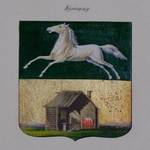 Industrial History: Trends of All‑Russian and Regional Development
Industrial History: Trends of All‑Russian and Regional Development
E.V. Pchelov
City Heraldry of the Russian Empire as a Source on the History of the Metallurgical Industry and Blacksmithing: 1720s – the First Half of the 19th Century
The article considers the complex of city coats of arms of the Russian Empire, which reflect mining industry, metallurgy and metalworking. The stages in the process of forming such coats of arms during the 18th–19th centuries are revealed. The connection of the coats of arms with the real history of the metallurgical industry and blacksmithing in these regions is shown. The creation and development of factory enterprises, the intensity of their activities were reflected in heraldry in the most active way. The range of armorial images, emblems, with the help of which mining and metallurgical activities were represented in the coats of arms, was studied, its evolution from more conventional, symbolic images to realistic drawings that accurately convey the appearance and features of various mechanisms and facilities was demonstrated. The methods by which mining, metallurgy and blacksmithing were embodied in the coats of arms, the symbolism of the color of the coat of arms shields, the features of the image of the coat of arms figures are considered. The close connection of Russian city heraldry with the development of industrial production areas is revealed.
Publishing: 28/10/2023
How to cite: Pchelov E.V. City Heraldry of the Russian Empire as a Source on the History of the Metallurgical Industry and Blacksmithing: 1720s – the First Half of the 19th Century // Historical Courier, 2023, No. 5 (31), pp. 56–70. [Available online: http://istkurier.ru/data/2023/ISTKURIER-2023-5-03.pdf]
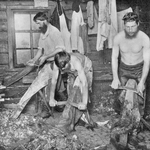 Leather and Fat-Rendering Industries: Production and Trade
Leather and Fat-Rendering Industries: Production and Trade
S.M. Ledrov
The Leather Industry of the Nizhny Novgorod Province at the Turn of the 18th–19th Centuries (According to the Materials of the Russian State Archive of Ancient Acts)
The photograph from the late 19th century shows workers in the tannery in the village of Bogorodskoye, Nizhny Novgorod Province. The technology of leatherworking has not changed for centuries. It was approximately the same in the 18th century, when this village – the Sheremetevs’ estate – has already gained all-Russian fame due to the widespread development of the peasant leather industry. The article is the first to consider the development of tannery in Bogorodskoye and other places of Nizhny Novgorod Province according to the reports for 1796–1803, submitted by tannery owners to the Manufaktura Collegium. The information available in them allows us to determine the centers of concentration of production, class affiliation of industrialists, grades and volumes of tanned leather, places of sale of finished goods.
Publishing: 28/10/2023
How to cite: Ledrov S.M. The Leather Industry of the Nizhny Novgorod Province at the Turn of the 18th–19th Centuries (According to the Materials of the Russian State Archive of Ancient Acts) // Historical Courier, 2023, No. 5 (31), pp. 71–83. [Available online: http://istkurier.ru/data/2023/ISTKURIER-2023-5-04.pdf]
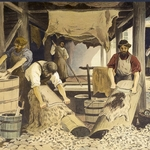 Leather and Fat-Rendering Industries: Production and Trade
Leather and Fat-Rendering Industries: Production and Trade
M.K. Akol’zina
Leather Production in the Tambov Province in the Nineteenth Century (According to the Materials of the State Archive of the Tambov Region and the State Archive of Ancient Acts)
In the first half of the 19th century, as in the previous period, leather production in the Tambov province was mainly artisanal and small-scale. Tanneries operated only in a few cities and counties of the region. On them, craftsmen and workers were engaged in the manufacture of yuft and sewing golits (mittens made of thick leather), in artisanal workshops they not only processed raw leather, produced mostovye (semi–finished leather production – hides of cattle, tanned, but not trimmed), morocco, laika and other tanned goods, produced harvested shoemaking, rawhide leather, plantar leathers, frills and trimmings, but also tanned sheepskin coats, sheepskins, boots, scraped sheepskins, belts, etc. were made leather products.
Publishing: 28/10/2023
How to cite: Akol’zina M.K. Leather Production in the Tambov Province in the Nineteenth Century (According to the Materials of the State Archive of the Tambov Region and the State Archive of Ancient Acts) // Historical Courier, 2023, No. 5 (31), pp. 84–100. [Available online: http://istkurier.ru/data/2023/ISTKURIER-2023-5-05.pdf]
 Leather and Fat-Rendering Industries: Production and Trade
Leather and Fat-Rendering Industries: Production and Trade
V.P. Mikityuk
The Role of Yekaterinburg Merchant Class in the Development of Interregional Trade in Lard the End of 18th – 19th Centuries
The article considers the participation and role of the Yekaterinburg merchants in the interregional trade in lard at the end of the 18th–19th centuries. A significant range of sources was studied, including materials from the media. The main centers for the purchase of raw lard, melted lard and livestock have been identified (bulls and rams) in Siberia, the Southern Urals, Central Asia, methods of its transportation to Yekaterinburg and delivery by water transport along the Chusova River, Kama, Volga and others to the ports of Taganrog and St. Petersburg were determined, the largest changes in the approaches of the Yekaterinburg merchants to the procurement operation were identified, the connection between the sale of lard and the development of salotopin production in Yekaterinburg was determined. It was established that in the 1800-1810s and 1860-1870s. Yekaterinburg merchants in the Ural-Siberian region occupied leading positions in the trade in lard. The reasons for the sharp drop in the interest of the Yekaterinburg merchants in the trade in livestock and lard, as well as in salotope production, have been identified.
Publishing: 28/10/2023
How to cite: Mikityuk V.P. The Role of Yekaterinburg Merchant Class in the Development of Interregional Trade in Lard the End of 18th – 19th Centuries // historical courier, 2023, no. 5 (31), pp. 101–108. [Available online: http://istkurier.ru/data/2023/ISTKURIER-2023-5-06.pdf]
 The History of Enterprises and the Entrepreneurial Strategy of Their Owners
The History of Enterprises and the Entrepreneurial Strategy of Their Owners
M.N. Baryshnikov
Porcelain Production in Russia: The Evolution of the Kornilov Family Business in the 19th – Early 20th Century
In the present article, the data from history of porcelain production in Russia are utilized to study the role of representatives of Kornilov dynasty in evolution of the family business in the 19th – early 20th century. Innovative orientation of the plant, family character of management and hereditary property rights are viewed as important factors underpinning Kornilov Brothers Company’s production and commercial operations success. Kornilov Brothers Company highlights the professional competence of owners in managing large, complex technical and technological projects, capable of navigating their way through various market situations, and adept at turning to whichever organizational form best suited their business interests.
Publishing: 28/10/2023
How to cite: Baryshnikov M.N. Porcelain Production in Russia: The Evolution of the Kornilov Family Business in the 19th – Early 20th Century // Historical Courier, 2023, No. 5 (31), pp. 109–119. [Available online: http://istkurier.ru/data/2023/ISTKURIER-2023-5-07.pdf]
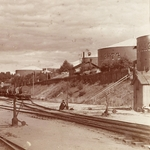 The History of Enterprises and the Entrepreneurial Strategy of Their Owners
The History of Enterprises and the Entrepreneurial Strategy of Their Owners
V.M. Marasanova
Viktor Ragozin, Dmitry Mendeleev, Nobel Brothers and the Development of Petrochemical Production in the Yaroslavl Province in the 1870s–1910s
The second half of the 19th century became the period of formation of petrochemical production in the Yaroslavl province, which was recorded in the all-Russian factory statistics and documents of the State Archive of the Yaroslavl Region and its branch in Rybinsk. Thanks to the initiative of the Nizhny Novgorod merchant V.I. Ragozin and the scientific support of D.I. Mendeleev in the village of Konstantinovo, in 1879 the "Plant of the Partnership for the Production of Mineral Oils V.I. Ragozin and Co." was built; since 1912, the plant was owned by the Partnership “Br. Nobel”. In 1893, an office of the Partnership appeared in Rybinsk, engaged in the trade in oil, kerosene, and oils. By 1900 oil storage facilities in der. Kopaevo near Rybinsk, from where deliveries were carried out in at least 39 cities of the empire. On the basis of archival documents, the distribution of quotas in the “Br. Nobel” – “Mazut” in the Rybinsk region – 70 % and 30 %, respectively. The Rybinsk district covered a significant territory between the cities of Romanov-Borisoglebsk (now Tutaev), Rybinsk, Ostashkov, Tikhvin, etc. The article reveals the development in the province of oil trade and a new competitive petrochemical production, not related to local traditions and the raw material base.
The work was carried out with the support of the project of Yaroslavl State University of VIP-018.
Publishing: 28/10/2023
How to cite: Marasanova V.M. Viktor Ragozin, Dmitry Mendeleev, Nobel Brothers and the Development of Petrochemical Production in the Yaroslavl Province in the 1870s–1910s // Historical Courier, 2023, No. 5 (31), pp. 120–130. [Available online: http://istkurier.ru/data/2023/ISTKURIER-2023-5-08.pdf]
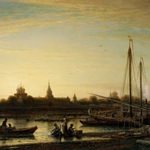 The History of Enterprises and the Entrepreneurial Strategy of Their Owners
The History of Enterprises and the Entrepreneurial Strategy of Their Owners
T.V. Yudenkova
Moscow Merchants and Patrons Pavel and Sergey Tretyakov: Factory and Trade Activities in Moscow and Kostroma in the 1860–1880s
Few people know today that the painting by the famous marine painter A.P. Bogolyubov “Ipatievsky Monastery near Kostroma” (1861, GTG, inv. 811) is connected with the history of the New Kostroma Linen Manufactory founded by brothers P.M. and S.M. Tretyakov and their son-in-law V.D. Konshin in 1866 on the left bank of the Kostroma River at confluence with the Volga. The place from which the famous monastery is depicted is very significant, the very place where the flax-spinning manufactory of the future founders of the Tretyakov Gallery will later be erected. The history of the acquisition, as well as the history of the creation of the painting, conceals many mysteries that have yet to be revealed to researchers of the artist’s work and the life and work of the Tretyakov brothers. Of course, the acquisition of this painting is not accidental, but a number of questions remain open, and among them – did the Tretyakovs visit Kostroma at the time of the acquisition of the landscape? has the Tretyakov Gallery already chosen a place for the construction of the factory by this time?
Publishing: 28/10/2023
How to cite: Yudenkova T.V. Moscow Merchants and Patrons Pavel and Sergey Tretyakov: Factory and Trade Activities in Moscow and Kostroma in the 1860–1880s // Historical Courier, 2023, No. 5 (31), pp. 131–146. [Available online: http://istkurier.ru/data/2023/ISTKURIER-2023-5-09.pdf]
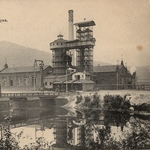 The History of Enterprises and the Entrepreneurial Strategy of Their Owners
The History of Enterprises and the Entrepreneurial Strategy of Their Owners
B.N. Latypov
History of the Zlatoust (Kosotur) Cast Iron Smelting and Iron Making Factory of Ufa Province at the Beginning of the 20th Century: Economic Situation
This article presents the history and economic indicators of Zlatoust (Kosotur) cast iron smelting and iron-making factory in Ufa province at the beginning of the 20th century. The article describes statistical data about Zlatoust plant for 1900–1910. The study attempts to reveal the history and to show the economic situation of the Zlatoust plant at the beginning of the 20th century. The study revealed the main reasons for the unprofitability of the plant. The measures undertaken after the fire in mechanical and shell factories were described as well.
Publishing: 28/10/2023
How to cite: Latypov B.N. History of the Zlatoust (Kosotur) Cast Iron Smelting and Iron Making Factory of Ufa Province at the Beginning of the 20th Century: Economic Situation // Historical Courier, 2023, No. 5 (31), pp. 147–158. [Available online: http://istkurier.ru/data/2023/ISTKURIER-2023-5-10.pdf]
 The Metropolitan Dimension of Business: St. Petersburg and Moscow
The Metropolitan Dimension of Business: St. Petersburg and Moscow
A.V. Keller
“The Bakery Which Belongs to me is Purely a Craft (Corporation) Establishment”: The Transformation of Technological Ways and The Traditional Bread Production of Russian Capitals in 19th Century – from Bakery to Industrial Production?
“Encyclopedia, or explanatory dictionary of sciences, arts and crafts” (1751–1780) D. Diderot, son of instrumental works of the master, and J.-B. D’Alambera was not the first publication of its kind, but it was the most popular, laying the foundation for an encyclopedic format of knowledge. Popular educational publications of its time – trips to the colorful world of artists and artisans for inquisitive youth and curious audiences were a kind of Bädeker – a guide in the world of useful professions. A mandatory attribute of such reference publications was the image of the traditional baker's craft, which is represented here by two publications from Breslau (Wroclaw) in 1811 and Nuremberg and Leipzig in 1824.
Publishing: 28/10/2023
How to cite: Кeller А.V. “The Bakery Which Belongs to me is Purely a Craft (Corporation) Establishment”: The Transformation of Technological Ways and The Traditional Bread Production of Russian Capitals in 19th Century – from Bakery to Industrial Production? // Historical Courier, 2023, No. 5 (31), pp. 159–172. [Available online: http://istkurier.ru/data/2023/ISTKURIER-2023-5-11.pdf]
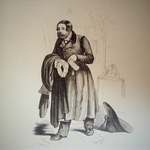 The Metropolitan Dimension of Business: St. Petersburg and Moscow
The Metropolitan Dimension of Business: St. Petersburg and Moscow
E.V. Kardash
Funeral Business in St. Petersburg in the 1800s–1860s: From Pushkin’s “Coffin Maker” to Historical Realities
The engraving by G.V. Deriker from V.F. Timm’s drawing “The Coffin Maker” (“Grobovoi master”) illustrates the essay by A.P. Bashutsky (1803‒1876), published in the literary series “Nashi, spisannye s natury russkimi” (St. Petersburg, 1841). In 1800‒1860, undertakers occupy a borderline position in St. Petersburg’s commercial landscape: they produce goods to supply the market and provide services for the decoration and organization of the funeral ceremony. The competition with church for the funeral paraphernalia rental market and resistance to state price regulation demonstrates the capacity of the entrepreneurial community to establish and codify trade practices conflicting with the legislative norm. The starting point for the presented historical research was the author’s earlier literary analysis of A.S. Pushkin’s “The Coffin Maker” (“Grobovschik”, 1830), which revealed the need to compare some motives of the story with Russian socio-economic realities in the field of urban funeral business.
Publishing: 28/10/2023
How to cite: Kardash E.V. Funeral Business in St. Petersburg in the 1800s–1860s: From Pushkin’s “Coffin Maker” to Historical Realities // Historical Courier, 2023, No. 5 (31), pp. 173–190. [Available online: http://istkurier.ru/data/2023/ISTKURIER-2023-5-12.pdf]
 Along the Volga Waterway: Iindustry and Trade
Along the Volga Waterway: Iindustry and Trade
N.V. Obnorskaya
The Evolution of the Entrepreneurial Activity of Yaroslavl Merchants in the Field of Production and Sale of Fabrics in the Late 18th – Early 20th Centuries
A rich merchant city, Yaroslavl was very different from its neighbors, such as Kostroma, Ivanovo, etc., although they are all referred to in the literature on the history of economics to the Central Industrial District (the province around Moscow). A distinctive feature of this region was the strong development of the textile industry. However, although there were enterprises of the relevant industry in Yaroslavl, but they were mostly in the hands of nonresident entrepreneurs as soon as at the end of the 18th century. Yaroslavl merchants from the beginning of the 19th century preferred trade rather than production. Fabrics were included in the range of goods traded by Yaroslavl residents, including in large volumes. But the growth in the number of textile enterprises in Russia, whose owners themselves began to sell their products, which emerged in the middle of the 19th century, led to the departure of Yaroslavl merchant capitals from the textile trade, and reorienting to trade and production of other types of goods. Being situated on the Volga, Yaroslavl has adopted a number of features in the development of entrepreneurship, characteristic for the cities of the Middle and Lower Volga, without becoming a typical center of the Moscow region.
Publishing: 28/10/2023
How to cite: Obnorskaya N.V. The Evolution of the Entrepreneurial Activity of Yaroslavl Merchants in the Field of Production and Sale of Fabrics in the Late 18th – Early 20th Centuries // Historical Courier, 2023, No. 5 (31), pp. 191–199. [Available online: http://istkurier.ru/data/2023/ISTKURIER-2023-5-13.pdf]
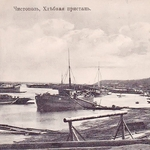 Along the Volga Waterway: Iindustry and Trade
Along the Volga Waterway: Iindustry and Trade
N.A. Koreeva
Merchant Shipping along the Volga and the Kama in the First Half of the 19th Century: Problems of Delivery and Safety Provision of Transported Goods
The article made an attempt to recreate the process of delivery of goods by water that existed in the merchant environment in the first half of the 19th century. The main operations of the logistics chain are shown: storage, packaging, loading, selection of a vessel, contractors for transportation, transportation of goods. Many factors influenced its safety: the state of the rivers (some of which merchants could overcome only as part of a caravan), conscientious attitude to the business of suppliers of goods, carriers – pilots and workers. The main problems during transportation, which could not be predicted, were the flooding of ships and robberies, which led to significant material losses.
Publishing: 28/10/2023
How to cite: Koreeva N.A. Merchant Shipping along the Volga and the Kama in the First Half of the 19th Century: Problems of Delivery and Safety Provision of Transported Goods // Historical Courier, 2023, No. 5 (31), pp. 200–214. [Available online: http://istkurier.ru/data/2023/ISTKURIER-2023-5-14.pdf]
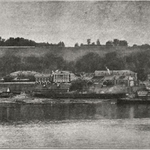 Along the Volga Waterway: Iindustry and Trade
Along the Volga Waterway: Iindustry and Trade
E.A. Zapevalova
Industrial Enterprises in Women’s Ownership and Management in the Nizhnii Novgorod Province in the 1890s
In the photo before us is a general view of the factories of the trading house “U.S. Kurbatov's heirs” from the Album of participants of the All-Russian Industrial and Art Exhibition in Nizhny Novgorod, published in 1896. The trading house, owned in the 1890s. O.P. Karpova and V.P. Kurbatov (brother and sister), was one of the largest mechanical engineering enterprises in the Nizhny Novgorod province and in the Russian Empire as a whole. The annual productivity of the plant was inferior in the Nizhny Novgorod province. only the Sormovsky plant of heirs D.E. Benardaki (annual production 1,500,000 rubles). The plant produced steamboats, cast-iron castings, steamboats, repair work was carried out. Products, primarily steamships, were sold to the basins of the Volga, rivers of Western Siberia and the Caspian Sea.
General view of the factories of the trading house "U.S. Kurbatov heirs." 1896.
Publishing: 28/10/2023
How to cite: Zapevalova E.A. Industrial Enterprises in Women’s Ownership and Management in the Nizhnii Novgorod Province in the 1890s // Historical Courier, 2023, No. 5 (31), pp. 215–229. [Available online: http://istkurier.ru/data/2023/ISTKURIER-2023-5-15.pdf]
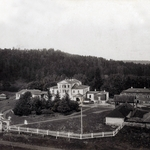 Entrepreneurs in the Period of Modernization of the Turn of the 19th–20th Centuries
Entrepreneurs in the Period of Modernization of the Turn of the 19th–20th Centuries
I.V. Maslova
Country Estates as a New Business Strategy for Russian Regional Merchants in the Second Half of the 19th – Early 20th Century (On the Example of the Stakheev Merchant Dynasty)
The article considers the problem of the formation of country estates of Russian entrepreneurs in the second half of the 19th and early 20th centuries. This process became a noticeable phenomenon not only in the central provinces, but also in the peripheral regions of Russia, e.g. in Volga-Kama area. Having chosen the study of the rural estates of the Yelabuga merchants Stakheevs as the subject of research, we analyzed the process of redistribution of noble land holdings in the Menzelinsky district of the Ufa province, where representatives of the dynasty acquired 17 land plots, including estates, summer cottages, farms, marinas, and forest lands. Each country estate of the Stakheevs was actually an independent system, where the personality and entrepreneurial interests of the owner significantly influenced the setting of the case. Considering that schools were organized in the estates, and temples were built, they became the administrative and cultural centers of the rural provinces.
The article was prepared as part of the activities of the Center for Research on the History of Entrepreneurship of the Regions of Russia (Institute of Russian History of the Russian Academy of Sciences, Yelabuga Institute (Branch) of Kazan Federal University).
Publishing: 28/10/2023
How to cite: Maslova I.V. Country Estates as a New Business Strategy for Russian Regional Merchants in the Second Half of the 19th – Early 20th Century (On the Example of the Stakheev Merchant Dynasty) // Historical Courier, 2023, No. 5 (31), pp. 230–240. [Available online: http://istkurier.ru/data/2023/ISTKURIER-2023-5-16.pdf]
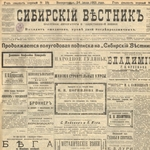 Entrepreneurs in the Period of Modernization of the Turn of the 19th–20th Centuries
Entrepreneurs in the Period of Modernization of the Turn of the 19th–20th Centuries
S.V. Abros’kin
Commercial Advertising on the Pages of Periodicals of Tomsk Province (1896–1913)
The article attempts to review and systematize the informational content of commercial advertisements on the pages of periodicals of the Tomsk province (1896–1913). The publication analyzes advertising texts in the context of product promotion in the local market; the main classes of advertised goods and groups of services are identified; general and distinctive features in advertising of official and private newspapers are highlighted. The author conclude about the importance of advertisements as a historical source on the history of regional entrepreneurship and trade. The advertised products reflected not only the economic and socio-cultural specifics of the region, but also system-wide changes characteristic of the all-Russian level.
Publishing: 28/10/2023
How to cite: Abroskin S.V. Commercial Advertising on the Pages of Periodicals of Tomsk Province (1896–1913) // Historical Courier, 2023, No. 5 (31), pp. 241–250. [Available online: http://istkurier.ru/data/2023/ISTKURIER-2023-5-17.pdf]
 The Entrepreneurs Destinies
The Entrepreneurs Destinies
V.P. Shakherov
The Fate of the Irkutsk Merchant Ivan Bechevin in the Context of the Relationship Between Government and Siberian Entrepreneurship in the Middle of the 18th Century
The article tells about the tragic fate of the Irkutsk merchant Ivan Bechevin, who faced the arbitrariness and extortion by the crown authorities. He was one of the richest Siberian merchants, engaged in wine buying in the Lena Region, participated in projects for the commercial development of islands in the Pacific Ocean. Given the growing role of entrepreneurship in the country’s economy, in an effort to protect the merchant class from the most egregious cases of arbitrariness, the government was forced to take certain steps to find a social compromise and partnership, endowing the elite of the third estate with elementary civil rights and guarantees.
Publishing: 28/10/2023
How to cite: Shakherov V.P. The Fate of the Irkutsk Merchant Ivan Bechevin in the Context of the Relationship Between Government and Siberian Entrepreneurship in the Middle of the 18th Century // Historical Courier, 2023, No. 5 (31), pp. 251–261. [Available online: http://istkurier.ru/data/2023/ISTKURIER-2023-5-18.pdf]
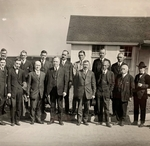 The Entrepreneurs Destinies
The Entrepreneurs Destinies
E.A. Kashapova
The Entrepreneurial Activity of P.P. Batolin (1878–1939) in Exile in 1918–1925
A photograph taken on March 19, 1919, shows a Russian-American group of entrepreneurs. During a business trip to America of the Russian millionaire P.P. Batolin (1878–1939), an agreement was concluded between I. Stakheev and Co. and Ford Motor Company. The photo is published for the first time, the picture is stored in a research center at the Henry Ford Museum in Detroit. During the correspondence with the research center, it was possible to find out the identities of only a few people represented in the photo. Sixth in the front row on the left is P.P. Batholin, right of him is G. Ford, behind Henry Ford's right shoulder W.B. Mayo (1866–1944), behind P.P. Batolin in the second row is C.E. Sorensen (1881–1968). The identities of the other participants in the meeting are still unknown, the author hopes that the publication of unique material will establish the identities of the other participants in the meeting.
Publishing: 28/10/2023
How to cite: Kashapova E.A. The Entrepreneurial Activity of P.P. Batolin (1878–1939) in Exile in 1918–1925 // Historical Courier, 2023, No. 5 (31), pp. 262–275. [Available online: http://istkurier.ru/data/2023/ISTKURIER-2023-5-19.pdf]
 The World of the Book
The World of the Book
V.V. Germizeeva
Keeping the Past for the Sake of the Future: Review of the Monograph by D.I. Petin “The History of the Batyushkin’s Family in Omsk”
This publication is an analytical review of D.I. Petin’s monograph “The History of the Batyushkin’s Family in Omsk”. In four chapters, in chronological order, we observe the life of the family through the prism of the socio-economic development of the region, since 1827. By the end of the 19th century, Omsk gradually began to turn into a major economic and administrative center, in connection with the construction of the Trans-Siberian railway, trade, banking, and entrepreneurship began to develop actively. The review focuses on the author’s work with a wide range of sources. In the final part, the importance of the reviewed monograph for historical science is emphasized.
Publishing: 28/10/2023
How to cite: Germizeeva V.V. Keeping the Past for the Sake of the Future: Review of the Monograph by D.I. Petin “The History of the Batyushkin’s Family in Omsk” // Historical Courier, 2023, No. 5 (31), pp. 276–286. [Available online: http://istkurier.ru/data/2023/ISTKURIER-2023-5-20.pdf]



